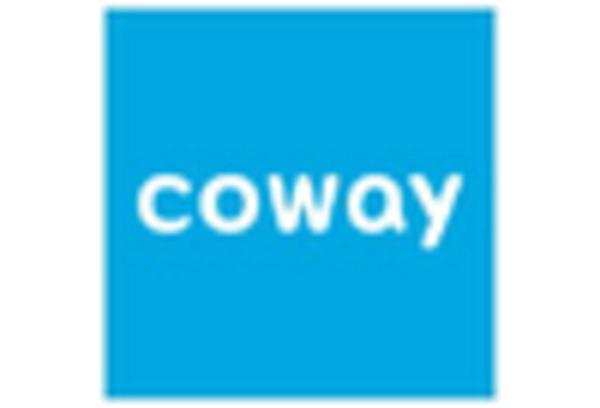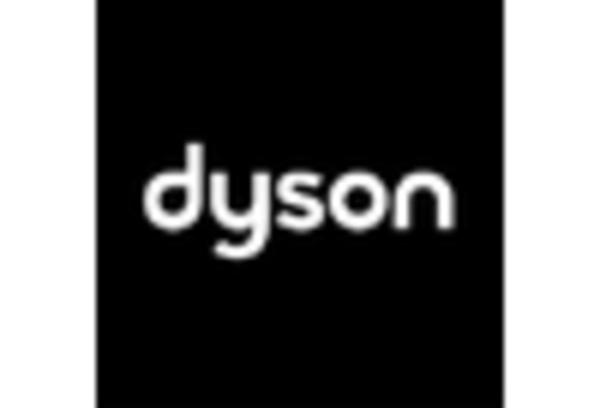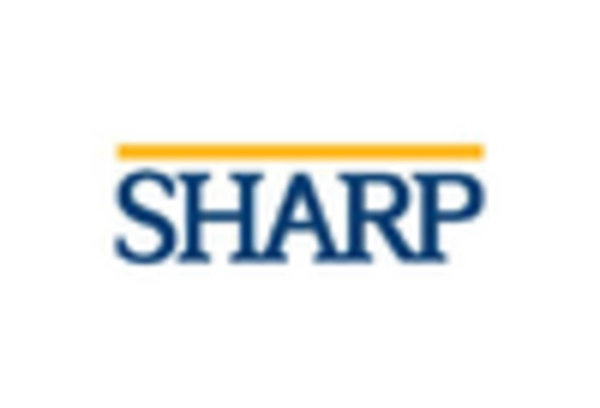Rising Urbanization
The trend of increasing urbanization in the United States appears to be a significant driver for the air purifier market. As more individuals migrate to urban areas, the demand for cleaner indoor air quality intensifies. Urban environments often experience higher levels of pollution, which can lead to respiratory issues and other health concerns. Consequently, consumers are more inclined to invest in air purifiers to mitigate these risks. According to recent data, urban areas have reported a 15% increase in air quality-related health complaints, further propelling the need for air purification solutions. This urbanization trend is likely to continue, suggesting a sustained growth trajectory for the air purifier market as residents seek to enhance their living conditions.
Increased Consumer Spending
The current economic climate in the United States indicates a rise in consumer spending, which may positively impact the air purifier market. As disposable incomes increase, consumers are more willing to invest in home appliances that promote health and well-being. The air purifier market has seen a notable growth rate of approximately 10% annually, driven by this increase in consumer expenditure. Households are prioritizing air quality, leading to a surge in demand for advanced air purification technologies. This trend suggests that as financial confidence grows, the air purifier market could experience further expansion, with consumers seeking high-quality products that offer effective solutions for indoor air pollution.
Growing Awareness of Indoor Air Quality
There is a growing awareness among consumers regarding the importance of indoor air quality, which serves as a crucial driver for the air purifier market. Educational campaigns and health organizations have highlighted the adverse effects of poor air quality on health, leading to increased consumer interest in air purification solutions. Recent surveys indicate that approximately 70% of households are now aware of the potential health risks associated with indoor air pollutants. This heightened awareness is likely to drive demand for air purifiers, as consumers actively seek products that can improve their living environments. The air purifier market is expected to benefit from this trend, as more individuals prioritize health-conscious purchasing decisions.
Environmental Concerns and Sustainability
Environmental concerns are increasingly influencing consumer behavior, thereby impacting the air purifier market. As awareness of climate change and pollution rises, consumers are more inclined to choose products that align with their values of sustainability. Air purifiers that utilize eco-friendly materials and energy-efficient technologies are gaining traction among environmentally conscious buyers. Recent data indicates that approximately 60% of consumers prefer brands that demonstrate a commitment to sustainability. This shift in consumer preference is likely to drive growth in the air purifier market, as manufacturers respond by developing products that not only improve indoor air quality but also minimize environmental impact.
Technological Innovations in Air Purification
Technological innovations within the air purifier market are transforming consumer expectations and driving market growth. Advances in filtration technologies, such as HEPA and activated carbon filters, have enhanced the effectiveness of air purifiers in removing harmful particles and allergens. Additionally, the integration of smart technology, including app connectivity and air quality monitoring, is appealing to tech-savvy consumers. The market has witnessed a surge in demand for these advanced features, with sales of smart air purifiers increasing by 25% over the past year. This trend suggests that as technology continues to evolve, the air purifier market will likely expand, catering to consumers seeking efficient and user-friendly solutions.

















Leave a Comment